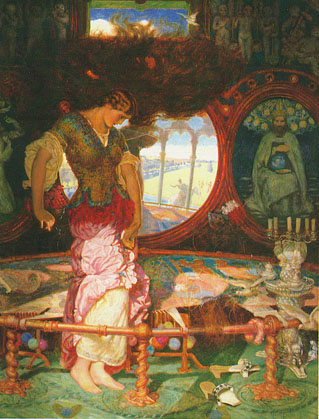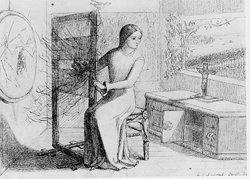- crisis in subjectivity--the use of mirror
- her education--ideologies of Romantic love and Celibacy, etc.
- different painters' interpretation
by Hunt, Waterhouse, Siddal, Egley
Why do they choose the moment of the Lady's defiance?

allegorical elements:
Please pay attention to the wall's dark tapestries, "upon which swirl the twisting bodies of angelic and allegorical figures, while the two roundels supporting the great mirror feature scenes of the Fall and the nativity [Wadsworth]" (Pearce 79)
exotic elements:
sandals & samovars («X°ê»É³ý)
